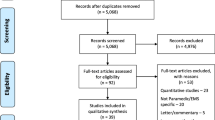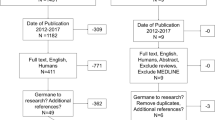Abstract
Introduction
Medical error is frequently the result of latent systems factors. Incident reporting systems face many challenges including inability of the system to process reports adequately, inadequate feedback mechanisms and lack of staff engagement especially from doctors. This paper describes a pragmatic physician-led desktop approach to a systems analysis of anaesthesia-related critical incidents which could be used to enhance incident reporting processing within the existing national incident reporting system.
Methods
Anaesthesiologists within a university teaching hospital were encouraged to report incidents anonymously during the 6-month study period from July 2019 to January 2020. Information was collected on incident details, outcome and preventability. A desktop systems analysis was performed to categorise incidents and to determine contributory factors. Latent errors were considered according to the level of the organisational hierarchy at which they occurred and solutions directed accordingly.
Results
Seventy cases were included giving a reporting rate of 1.76%. Airway/breathing circuit problems (34%) were most frequently cited incidents, followed by other equipment (27%), medication errors (20%) and airway events (19%). The vast majority of events were considered preventable. Most incidents were near misses or of negligible adverse effect with only 6% requiring more than minor treatment. Organisational and strategic contributory factors were identified in 83% of cases, 93% of which were addressable within the department.
Conclusion
Implementing local incident reporting systems can be used to complement existing systems at the macro and mesolevel and can be used to improve system processing, create a phased response to latent errors and enhance engagement.
Similar content being viewed by others
Data availability
Data is available from the corresponding author upon reasonable request.
References
Daley U, Gandhi T, Mate K et al (2018) Framework for effective board governance of health system quality. White paper Boston: IHI
Makary MA, Daniel M (2016) Medical error—the third leading cause of death in the US. BMJ 353:i2139
Brennan TA, Leape LL, Laird NM et al (1991) Incidence of adverse events and negligence in hospitalized patients. Results of the Harvard Medical Practice Study I. N Engl J Med 324(6):370–6
Kohn LT, Corrigan J, Donaldson MS (2000) To err is human: building a safer health system: National academy press Washington, DC
Cohen MR (2000) Why error reporting systems should be voluntary. BMJ 320(7237):728–729
Leape LL (1997) A systems analysis approach to medical error. J Eval Clin Pract 3(3):213–222
Trbovich P, Shojania KG (2017) Root-cause analysis: swatting at mosquitoes versus draining the swamp. BMJ Quality & Safety bmjqs-2016–0062
HSE (2020) Incident Management Framework
Mitchell I, Schuster A, Smith K et al (2016) Patient safety incident reporting: a qualitative study of thoughts and perceptions of experts 15 years after “To Err is Human.” BMJ Qual Saf 25(2):92–99
Peerally MF, Carr S, Waring J, Dixon-Woods M (2017) The problem with root cause analysis. BMJ Qual Saf 26(5):417–422
Macrae C (2016) The problem with incident reporting. BMJ Qual Saf 25(2):71–75
Petschnig W, Haslinger-Baumann E (2017) Critical Incident Reporting System (CIRS): a fundamental component of risk management in health care systems to enhance patient safety. Safety in Health 3(1):9
McCannon CJ, Hackbarth AD, Griffin FA (2007) Miles to go: an introduction to the 5 Million Lives Campaign. Jt Comm J Qual Patient Saf 33(8):477–484
Currie M (1989) A prospective survey of anaesthetic critical events in a teaching hospital. Anaesth Intensive Care 17(4):403–411
Executive HS (2019) Open DIsclosure Policy
Executive HS (2008) Risk Assessment Tool
Vincent C, Taylor-Adams S, Stanhope N et al (1998) Framework for analysing risk and safety in clinical medicine. BMJ (Clinical research ed) 316(7138):1154–1157
Cooper JB, Newbower RS, Long CD, McPeek B (1978) Preventable anesthesia mishaps: a study of human factors. Anesthesiology 49(6):399–406
Wetmore D, Goldberg A, Gandhi N et al (2016) An embedded checklist in the Anesthesia Information Management System improves pre-anaesthetic induction setup: a randomised controlled trial in a simulation setting. BMJ Qual Saf 25(10):739–746
Eichhorn JH (2010) APSF hosts medication safety conference. APSF Newsl 25(1):1–20
Saito T, Wong ZW, Thinn KK et al (2015) Review of critical incidents in a university department of anaesthesia. Anaesth Intensive Care 43(2):238–243
Jerison HJ, Pickett RM (1963) Vigilance: a review and re-evaluation. Hum Factors 5(3):211–238
Macrae C (2014) Close calls: managing risk and resilience in airline flight safety: Springer
Jhugursing M, Dimmock V, Mulchandani H (2017) Error and Root Cause Analysis. BJA Education 17(10):323–333
Saxena S, Krombach JW, Nahrwold DA, Pirracchio R (2020) Anaesthesia-specific checklists: a systematic review of impact. Anaesth Crit Care Pain Med 39(1):65–73
Henriksen K, Kaplan H (2003) Hindsight bias, outcome knowledge and adaptive learning. Qual Saf Health Care 12(Suppl 2):ii46–50
Woolf SH, Kuzel AJ, Dovey SM, Phillips RL Jr (2004) A string of mistakes: the importance of cascade analysis in describing, counting, and preventing medical errors. Ann Fam Med 2(4):317–326
Arkes HR, Faust D, Guilmette TJ, Hart K (1988) Eliminating the hindsight bias. J Appl Psychol 73(2):305
Carayon P, Xie A, Kianfar S (2014) Human factors and ergonomics as a patient safety practice. BMJ Qual Saf 23(3):196–205
England NAGotSoPi (2013) Improving the safety of patients in England
Kumar V, Barcellos WA, Mehta MP, Carter JG (1988) An analysis of critical incidents in a teaching department for quality assurance. A survey of mishaps during anaesthesia. Anaesthesia 43(10):879–83
Galletly DC, Mushet NN (1991) Anaesthesia system errors. Anaesth Intensive Care 19(1):66–73
Cohen MM, Duncan PG, Pope WD, Wolkenstein C (1986) A survey of 112,000 anaesthetics at one teaching hospital (1975–83). Can Anaesth Soc J 33(1):22–31
Maaløe R, la Cour M, Hansen A et al (2006) Scrutinizing incident reporting in anaesthesia: why is an incident perceived as critical? Acta Anaesthesiol Scand 50(8):1005–1013
Taylor JA, Brownstein D, Christakis DA et al (2004) Use of incident reports by physicians and nurses to document medical errors in pediatric patients. Pediatrics 114(3):729–735
Acknowledgements
The authors would like to acknowledge the staff in the Anaesthesia Department in St. James’s Hospital Dublin who participated in this study.
Author information
Authors and Affiliations
Contributions
CFM, RF, DK and JMP were involved with conception, design and implementation of the study. CFM, RF, DK and JMP were involved in data acquisition and data analysis. CFM, RF and JMP were involved in data interpretation. All the authors were involved in drafting of the work, final approval and agreement to be accountable for all aspects of the work. The corresponding author attests that all listed authors meet the authorship criteria and that no others meeting the criteria have been omitted.
Corresponding author
Ethics declarations
Ethical approval
This study was submitted to the Research and Innovation Committee of St. James’s Hospital Dublin who approved this study without formal ethical review.
Conflict of interest
The authors declare no competing interests.
Additional information
Publisher's Note
Springer Nature remains neutral with regard to jurisdictional claims in published maps and institutional affiliations.
Rights and permissions
About this article
Cite this article
Mullins, C.F., Free, R., Kelly, D. et al. A desktop systems analysis of critical incidents within a university hospital department of anaesthesia. Ir J Med Sci 191, 1831–1842 (2022). https://doi.org/10.1007/s11845-021-02766-1
Received:
Accepted:
Published:
Issue Date:
DOI: https://doi.org/10.1007/s11845-021-02766-1





